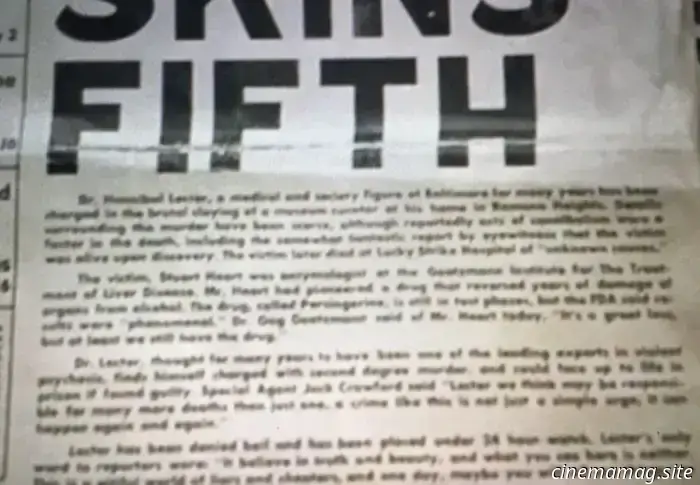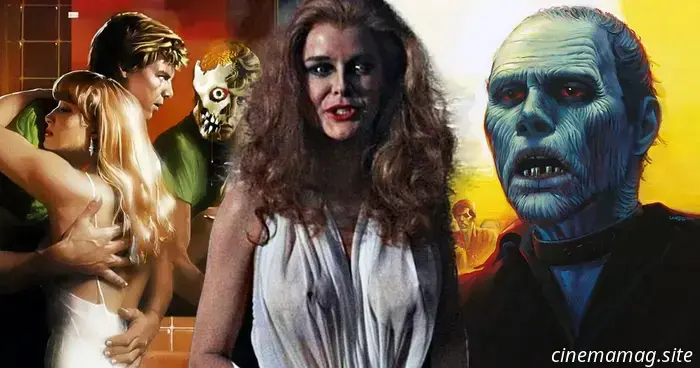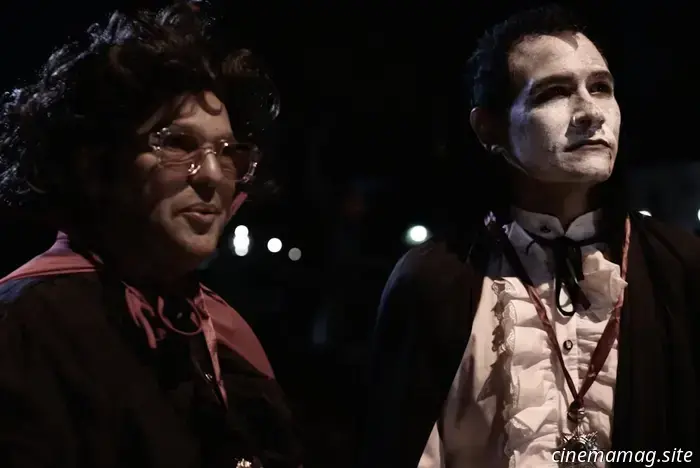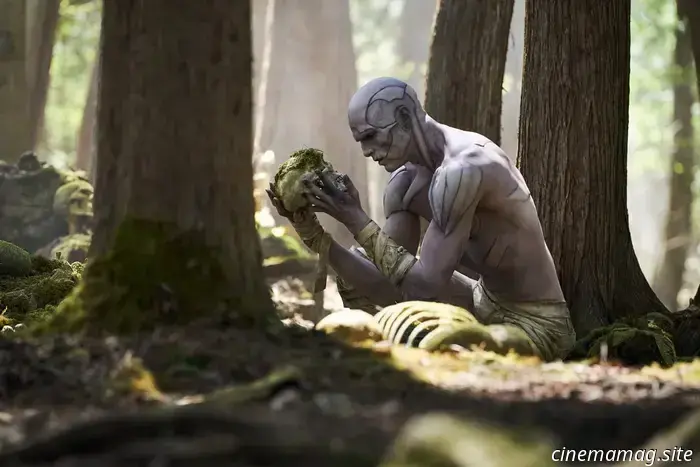
15 Facts About The Silence of the Lambs That an Average Person Might Not Be Aware Of
Celebrate Halloween with "Silence of the Lambs," often regarded as one of the most terrifying films ever created.
The 1991 classic directed by Jonathan Demme revolves around young FBI trainee Clarice Starling (Jodie Foster) as she is tasked with persuading the imprisoned serial killer Hannibal Lecter (Anthony Hopkins) to provide insights into a series of murders committed by Buffalo Bill (Ted Levine).
The film is adapted from the excellent novel by Thomas Harris and was written by Ted Tally.
Regardless of how many times you've watched it, we bet you may have overlooked some of the intriguing details we'll share.
The ‘Bill Skins Fifth’ Article Is Targeted at Hannibal Lecter, Not Buffalo Bill
Orion – Credit: C/O
In the opening minutes of "Silence of the Lambs," as Clarice waits for Jack Crawford (Scott Glenn) in his Quantico office, she examines the disturbing photographs and newspaper articles displayed on the wall. One headline from the National Inquisitor grabs her attention: BILL SKINS FIFTH.
However, if you pause and look more closely at the article, you'll discover that it's not about Bill at all, but rather about Lecter: it details Lecter’s arrest and background, including quotes from both Lecter and Crawford.
The writer of the article for "Silence of the Lambs" either didn’t expect anyone to scrutinize the text or is just having a little fun with the audience. We’ll delve deeper into the specifics of this article shortly because it’s quite strange.
Clarice’s Political Views
Orion – Credit: C/O
"Silence of the Lambs" doesn’t overtly express any political views; its themes of empathy and resilience against horrific opposition are meant to be universal. Yet, we catch a glimpse of Clarice Starling’s beliefs during a brief exchange when she’s first called into Crawford’s office.
“I remember you from my seminar at UVA,” he says, referencing her university. “You really challenged me on the bureau’s Civil Rights record during the Hoover years.”
While we can't say for certain, the mention of Civil Rights likely alludes to Hoover's surveillance of Rev. Martin Luther King, Jr. This is one of the various clues the film gives about Clarice’s empathy and support for marginalized individuals.
Lecter Provides Clarice a Key Hint During Their Initial Meeting
Orion – Credit: C/O
Just a couple of minutes into their first discussion, Clarice inquires about one of the impressive pencil sketches he has displayed in his cell. “That is the Duomo, seen from the Belvedere,” he responds. As Lecter is already aware, Jame Gumb — also known as Buffalo Bill — resides in Belvedere, Ohio.
A belvedere is an architectural feature designed for optimal viewing, in this case, of the duomo, or cathedral, in Florence, Italy. “Do you know Florence?” Lecter asks.
Not only is he giving Clarice a hint about Jame Gumb, but perhaps also a glimpse into his own intentions, should he succeed in escaping Dr. Chilton’s confinement: at the start of the "Silence of the Lambs" sequel "Hannibal," Lecter is shown living in Florence as a museum curator.
Museum Curator
MGM – Credit: C/O
Speaking of museum curators, we previously mentioned we would clarify more about the "BILL SKINS FIFTH" article — which, despite its headline, is actually about Lecter.
The article opens with the line: “Dr. Hannibal Lecter, a prominent medical and social figure in Baltimore for many years, has been charged in the brutal murder of a museum curator at his residence…”
This is intriguing because Hannibal does indeed kill a museum curator and assumes his position, but this occurs in the film "Hannibal," which is set after "Silence of the Lambs."
The TV series "Hannibal" also depicts Lecter killing a curator and taking over his job. Maybe he just has a penchant for eliminating museum curators.
Crosses
Orion
After Clarice recounts the tragic story that inspired the film's title, Lecter sketches her with a lamb in his makeshift Memphis prison cell.
His drawing features three distinctive crosses in the background. A detail-oriented Redditor pointed out that these seem to resemble Coffindaffer’s Crosses — erected by a West Virginia native beginning in the 1980s to disseminate Jesus’ message. The crosses likely reference Clarice’s roots in West Virginia. Moreover, in biblical symbolism, the Lamb represents Jesus.
However, let’s take a darker turn: Jesus symbolizes resurrection, and the drawing contributes to Hannibal’s revival after prolonged imprisonment. When Sgt. Pembry and Lt. Boyle bring Lecter his second meal — lamb chops — Lecter buys some time by requesting Boyle not to set his plate on top















Other articles
 The Ten Best Horror Films of 1985
Casey Chong journeys back four decades to explore the finest horror films of 1985. That year was significant for blockbuster movies that achieved notable pop-culture status, including Back to the Fut…
The Ten Best Horror Films of 1985
Casey Chong journeys back four decades to explore the finest horror films of 1985. That year was significant for blockbuster movies that achieved notable pop-culture status, including Back to the Fut…
 Jaime Zevallos and Nicholas Turturro introduce Vampire For Hire just in time for Halloween.
Actor-filmmaker Jaime Zevallos (from Marvel’s Cloak & Dagger) and Nicholas Turturro (from Apple TV+’s Highest 2 Lowest) feature in Vampire For Hire, a horror-comedy that bites into celebrity culture...
Jaime Zevallos and Nicholas Turturro introduce Vampire For Hire just in time for Halloween.
Actor-filmmaker Jaime Zevallos (from Marvel’s Cloak & Dagger) and Nicholas Turturro (from Apple TV+’s Highest 2 Lowest) feature in Vampire For Hire, a horror-comedy that bites into celebrity culture...
 Star Wars: The Black Series introduces a seasonal Valentine’s Day Edition Ewok figure.
During Italy’s Lucca Comics & Games 2025 convention, Hasbro revealed a new seasonal addition to Star Wars: The Black Series, introducing the Valentine’s Day Edition Ewok figure, featuring…
Star Wars: The Black Series introduces a seasonal Valentine’s Day Edition Ewok figure.
During Italy’s Lucca Comics & Games 2025 convention, Hasbro revealed a new seasonal addition to Star Wars: The Black Series, introducing the Valentine’s Day Edition Ewok figure, featuring…
 Comic Book Review – Dick Tracy Halloween Edition
Andrew Newton evaluates the Dick Tracy Halloween Special… Mad Cave’s Dick Tracy Halloween Special infuses a spooky allure into the classic detective's universe, combining pulp crime with lighthearted frights…
Comic Book Review – Dick Tracy Halloween Edition
Andrew Newton evaluates the Dick Tracy Halloween Special… Mad Cave’s Dick Tracy Halloween Special infuses a spooky allure into the classic detective's universe, combining pulp crime with lighthearted frights…
 A new trailer for Guillermo del Toro’s Frankenstein has been released.
As Frankenstein is currently screening in select theaters, Netflix has released the final trailer for Guillermo del Toro’s adaptation of Mary Shelley’s timeless story in preparation for its debut on the streaming platform...
A new trailer for Guillermo del Toro’s Frankenstein has been released.
As Frankenstein is currently screening in select theaters, Netflix has released the final trailer for Guillermo del Toro’s adaptation of Mary Shelley’s timeless story in preparation for its debut on the streaming platform...
15 Facts About The Silence of the Lambs That an Average Person Might Not Be Aware Of
Here are 15 details from Silence of the Lambs that you might have overlooked, unless you're part of the Behavioral Science Unit.
